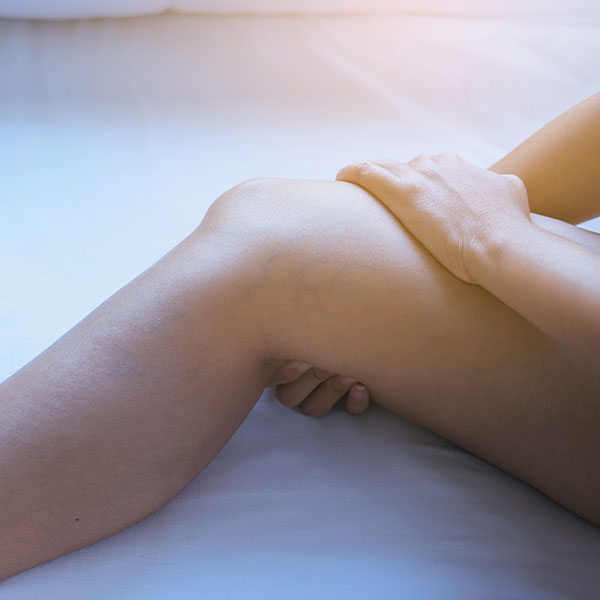What Are Varicose Veins?
Varicose veins are enlarged or twisted veins that bulge through the skin, usually on the legs or feet. Varicose veins—or milder spider veins—are often only a cosmetic concern, but they can cause aches, pain, discomfort, or more serious problems.
Learn more about the signs and symptoms of varicose veins, along with preventative steps, and the treatments we offer to help get you back to normal life.

Cause Of Varicose Veins
Varicose veins are caused by increased blood pressure in the superficial veins. While varicose veins usually don’t co-occur with blood clotting disorders such as deep vein thrombosis (DVT), which affects the deep veins of the legs, you should be aware of signs of blood clots that could indicate a more serious medical issue. These include pain, swelling, and redness of the leg. Call your healthcare provider if you have symptoms of a blood clot.
Signs & Symptoms Of Varicose Veins
The most obvious symptom of varicose veins is the appearance of dark or bluish-colored veins visible through the skin. In many cases, varicose veins may not cause any pain or serious symptoms. When additional symptoms do occur, they may include:
- Feelings of heaviness, burning, throbbing, or aching in the legs
- Muscle cramping or swelling in the lower legs
- Worsening pain after sitting or standing for a long time
- Color changes in the skin
- Itching, rashes, or sores on the legs

Risk Factors
Several risk factors can increase the chances of developing varicose veins:
- Family history of spider or varicose veins
- History of blood clots
- Overweight or obesity
- Older age
- Sedentary lifestyle or prolonged standing
- Leg injury
- Pregnancy
- Smoking
- Using oral contraceptive pills or hormone replacement
